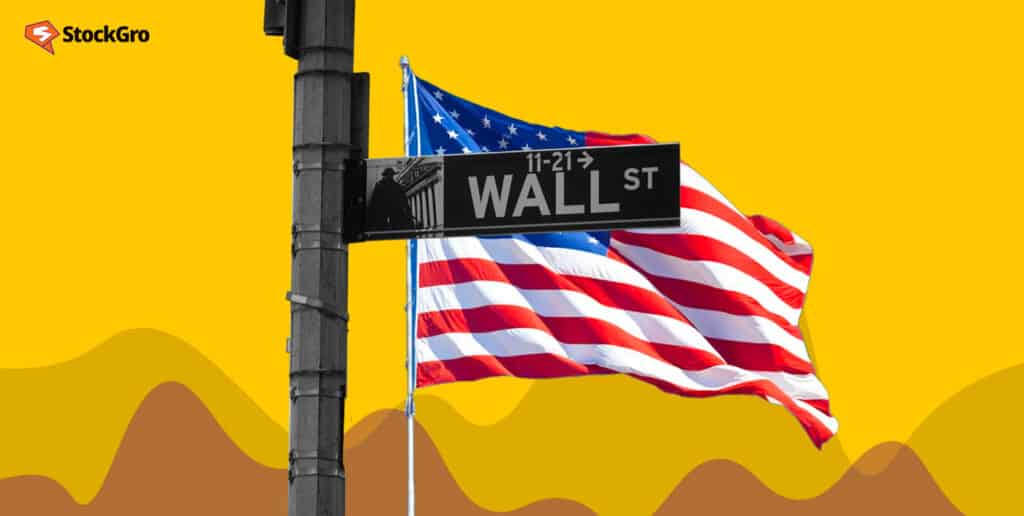
Did you know an Indian resident can invest USD 250,000 annually in the US stock market? Wait, that’s approx. Rs.2 crore worth of investment in stocks. And what’s better? You do not require any special permission to invest this amount, according to the Reserve Bank of India (RBI). But hold your horses. There are only a few specific ways to invest in US stocks.
And this is the topic of discussion – how can an Indian resident get a scoop on NYSE or Nasdaq stocks? This article has some viable options for you –
Direct Investment in US Stocks
The most common way to invest in US stocks is to open a demat account with a domestic or overseas broker.
Domestic trading account
If you don’t wish to pay a hefty brokerage fee, a domestic broker is the way to go. These brokers are Indian entities registered with the NSE IFSC, i.e., a branch of the National Stock Exchange that allows trading in US stocks for Indian retail investors.
Now, the process can be a tad bit tedious. But once set up, you can easily trade or invest in the much-celebrated FAANG stocks! So, here’s a breakdown of the steps –
Step 1: Register or open a trading account with any of the 36+ brokers registered with the IFSCA – International Financial Services Centres Authority. The complete list of registered brokers is available on NSE’s website.
Step 2: Make sure to complete the KYC process by submitting identity, address, and financial proof.
Step 3: Fill and submit form A2 under Liberalised Remittance Scheme (LRS). In a nutshell, this scheme permits Indian citizens to transfer funds abroad for investing in US shares, among other reasons.
Step 4: Transfer money from your domestic bank account to your NSE IFSC trading account.
Step 5: On successful funds transfer, begin trading on the NSE IFSC platform.
Interestingly, this process began only a year ago, with the development of GIFT!
Also Read: Ever wondered how ChatGPT makes money?
Involvement of GIFT and IFSC
The Gujarat International Finance Tec city or GIFT was developed to create a hub for both domestic and international firms to do business in India. So, why is it relevant to you? Well, with GIFT in the picture, you can invest in limited US stocks, without a high brokerage fee.
GIFT houses the international financial services centre (IFSC) where all trading magic happens. Put simply, without being listed in India, you could invest in stocks of Apple, Google, and Amazon.
Of course, you won’t directly invest in their stocks. By paying in US dollars, you give money to investment firms (or market makers). They will invest the money in US stocks. As proof, you would receive unsponsored depositary receipts. You can use these receipts to trade on the IFSC platform.
Thus, instead of actual stocks, you would get receipts in exchange for money invested. Rest everything remains the same.
Note: The receipt-to-share ratio would differ for each US stock. For instance, 1 share of Microsoft is equivalent to 50 receipts. 1 share of Apple equals 25 receipts…you get the gist!
Question is – what was the previous alternative?
Overseas trading account
Some individuals, especially high net-worth individuals (HNIs) tend to use the conventional route for investing in US stocks. How? By either –
- Opening a trading account with an Indian broker having tie-up with international brokers
(e.g., HDFC Securities, ICICI Direct, Kotak Securities, Axis Securities) - Opening a trading account with a foreign broker having a presence in India
(e.g., Charles Schwab, Ameritrade)
| Gross amount to be exchanged (in Rs.) | Charges |
| Less than or equal to 1 lakh | 1% of gross amount + 18% GST |
| Greater than 1 lakh and less than or equal to 10 lakh | Rs. 1000 + 0.5% of gross amount |
| Greater than 10 lakh | Rs. 5500 + 0.1% of gross amount (max amount capped at Rs. 60,000) |
Here’s an example –
For instance, you plan to invest US dollars worth equal to Rs. 1 lakh in US stocks. Here’s the list of charges - Bank transfer charges = 4% of amount = Rs. 4000 Bank commission + 18% GST = Rs. 590 Now, taxable value on currency conversation = Rs. 1180 Thus, for conversion of Rs.1 lakh into US dollars, you will have to pay = Rs.5770
But hold on – these are just bank changes. Since these transactions come under LRS, you’re expected to pay 5-20 percent as tax collected at source (TCS).
Adding the brokerage fee, exchange rates, capital gains tax, etc, the charges would amount to Rs.10,000-15,000, approx. And all this just for exchanging Rs.1 lakh.
You may also like: Capital gains tax – overview, types, and current rates
Question is – can you afford these charges? If yes, go-ahead and choose the easy route. Get access to all stocks listed in the US stock market.
If however, the answer is no, you may want to give NSE-IFSC accounts a try!
Indirect investment in US stocks
For a trader, direct options seem more viable. They have more control over where their money goes and which stocks they purchase. But others may want to limit their involvement.
If you belong to the second group, you can always give mutual funds a try.
Mutual Funds
You can invest in international mutual funds using your demat account. While some of them track indices of countries in Asia or South America, most are dependent on US stocks.
Alternatively, you can invest your money in Indian mutual funds that invest in US stocks directly. There is no separate or special demat account required. But the exit fee to get the invested amount back, may be higher than the usual 1 percent.
Additionally, if you want to reduce the volatility that comes with trading in US stocks, why not give ETFs a try?
Exchange Traded Funds (ETFs)
Currently, the US stock market is highly volatile, especially after banks’ “not-so-good” performance. And of course the inflationary pressure. So, you can always reduce the volatility of stocks by investing in ETFs. Unlike mutual funds, they are traded during normal working hours. But unlike nominal stocks, ETFs are a basket of various shares.
So, what happens when you invest in an ETF that tracks the S&P 500 index? Your investment will be spread across the 500 largest publicly traded companies in the United States. Thus, you get a diverse portfolio of stocks with low volatility.
Although mutual funds or ETFs are more affordable, nothing compares to the thrill of trading directly in S&P. So, why not try the route once?
After all, there’s one commonality between trading and life – RISK!

